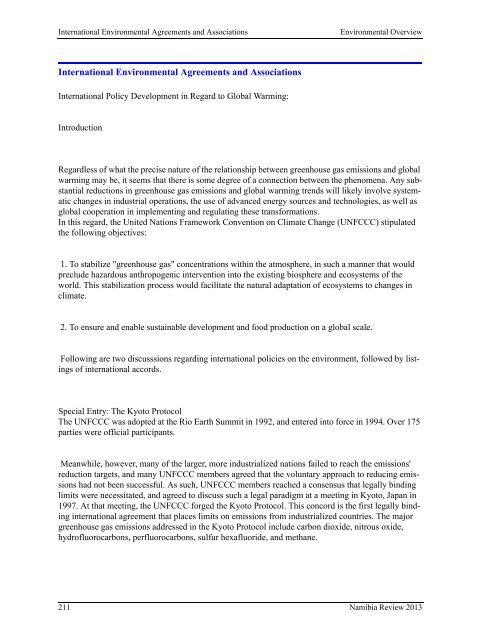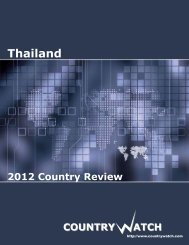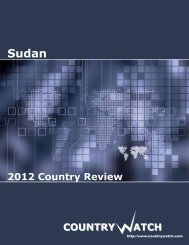Namibia - CountryWatch
Namibia - CountryWatch
Namibia - CountryWatch
You also want an ePaper? Increase the reach of your titles
YUMPU automatically turns print PDFs into web optimized ePapers that Google loves.
International Environmental Agreements and Associations Environmental Overview<br />
International Environmental Agreements and Associations<br />
International Policy Development in Regard to Global Warming:<br />
Introduction<br />
Regardless of what the precise nature of the relationship between greenhouse gas emissions and global<br />
warming may be, it seems that there is some degree of a connection between the phenomena. Any substantial<br />
reductions in greenhouse gas emissions and global warming trends will likely involve systematic<br />
changes in industrial operations, the use of advanced energy sources and technologies, as well as<br />
global cooperation in implementing and regulating these transformations.<br />
In this regard, the United Nations Framework Convention on Climate Change (UNFCCC) stipulated<br />
the following objectives:<br />
1. To stabilize "greenhouse gas" concentrations within the atmosphere, in such a manner that would<br />
preclude hazardous anthropogenic intervention into the existing biosphere and ecosystems of the<br />
world. This stabilization process would facilitate the natural adaptation of ecosystems to changes in<br />
climate.<br />
2. To ensure and enable sustainable development and food production on a global scale.<br />
Following are two discusssions regarding international policies on the environment, followed by listings<br />
of international accords.<br />
Special Entry: The Kyoto Protocol<br />
The UNFCCC was adopted at the Rio Earth Summit in 1992, and entered into force in 1994. Over 175<br />
parties were official participants.<br />
Meanwhile, however, many of the larger, more industrialized nations failed to reach the emissions'<br />
reduction targets, and many UNFCCC members agreed that the voluntary approach to reducing emissions<br />
had not been successful. As such, UNFCCC members reached a consensus that legally binding<br />
limits were necessitated, and agreed to discuss such a legal paradigm at a meeting in Kyoto, Japan in<br />
1997. At that meeting, the UNFCCC forged the Kyoto Protocol. This concord is the first legally binding<br />
international agreement that places limits on emissions from industrialized countries. The major<br />
greenhouse gas emissions addressed in the Kyoto Protocol include carbon dioxide, nitrous oxide,<br />
hydrofluorocarbons, perfluorocarbons, sulfur hexafluoride, and methane.<br />
211 <strong>Namibia</strong> Review 2013




